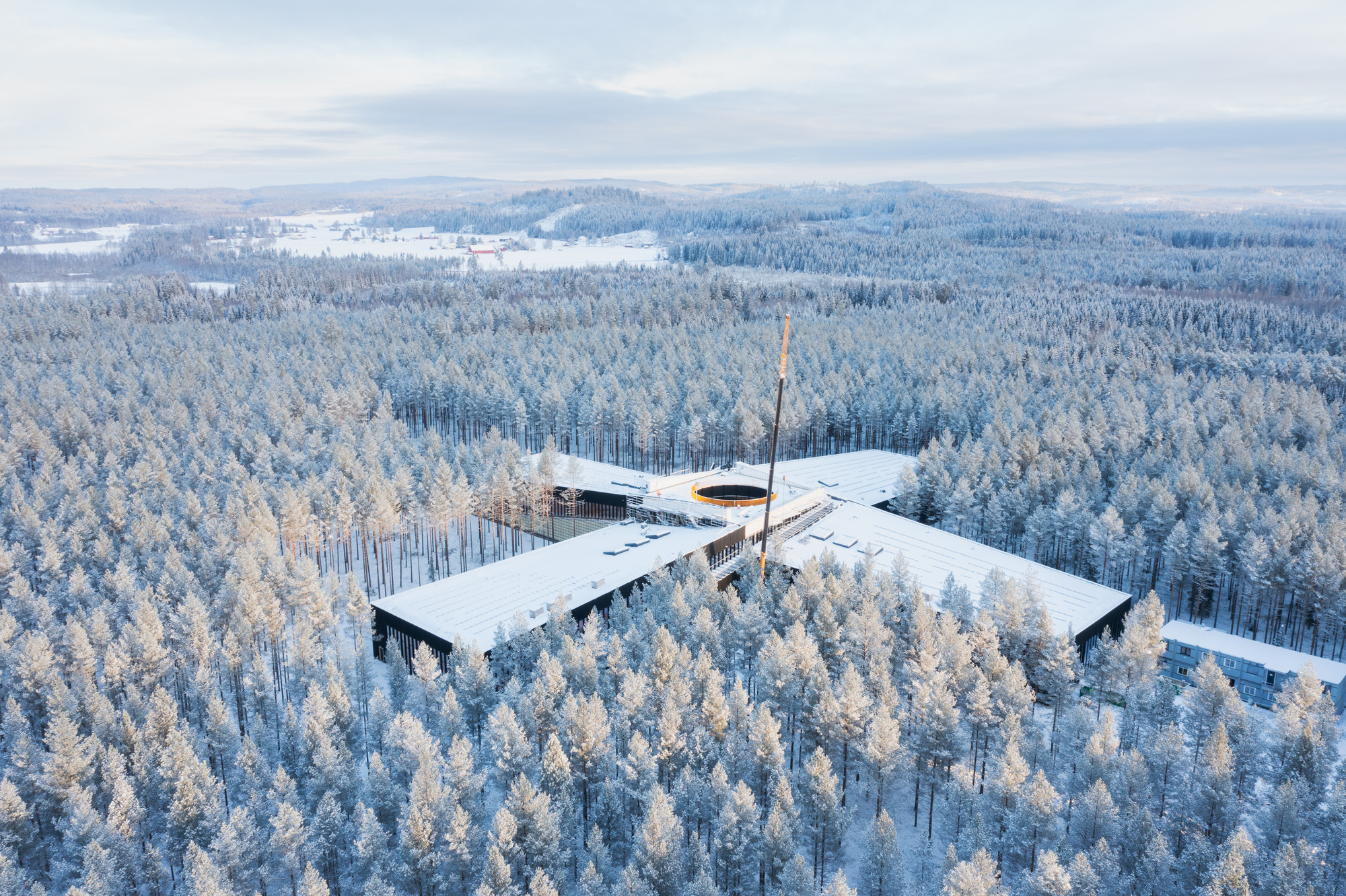livMatS Pavilion: A Sopisthicated Building Using Natural Fibers
A group of architects and engineers of the ITECH master's program in the Cluster of Excellence Integrative Computational Design and Construction for Architecture (IntCDC) at the University of Stuttgart and biologists from the Cluster of Excellence Living, Adaptive and Energy-autonomous Material Systems (livMatS) at the University of Freiburg have designed the livMatS Pavilion. His vision is to combine nature and technology to develop cutting-edge technology and energy.
 (Top view of the livMatS pavilion)
(Top view of the livMatS pavilion)
Pavilion livMatS is the first building to be built with a structure made of hemp fiber wrapped around using the sophistication of robotic technology. This flax fiber is used because of its naturally renewable properties as well as biodegradable.
Located in the Botanical Garden of the University of Freiburg, Germany, the livMats pavilion features a new combination of natural materials and advanced digital technologies taking into account geometric, material, structural, production, environmental, and aesthetic shapes. Simultaneously, this pavilion is built with fabrication techniques from sophisticated robots to produce a unique, ecological and expressive architecture.
 (LivMatS pavilion built in the University of Freiburg Botanical Garden)
(LivMatS pavilion built in the University of Freiburg Botanical Garden)
 (During the day the livMatS pavilion produces artistic shadows)
(During the day the livMatS pavilion produces artistic shadows)
It consists of 15 components of robotically made hemp fibers with continuous spun natural fibers and fibrous stone elements on top of the structure. Pavilion livMatS weighs almost 1.5 tons with an area of 46 square meters. The pavilion is covered with a polycarbonate roof that is waterproof and can protect hemp fibers from UV radiation and moisture from rain or snow.
 (LivMatS pavilion against a green natural background)
(LivMatS pavilion against a green natural background)
 (Polycarbonate details)
(Polycarbonate details)
The design is inspired by the shape of the saguaro cactus (Carnegiea gigantea) and the prickly pear cactus (Opuntia sp.), in which the cactus has a hollow cylindrical wood core. Its shape resembling a prickly pear cactus is also intertwined with wood grains that look like a net arranged in layers and interconnected to support high load power.
 (Its shape resembles a prickly cactus plant)
(Its shape resembles a prickly cactus plant)
In the past two years, the team researched the potential use of natural fibers as building materials, due to their strong and environmentally friendly properties. From this study, the team got the result that synthetically produced fibers can be an alternative material for buildings. Through the livMatS pavilion construction project, the team found that hemp fiber not only has the potential to reduce the environmental impression of the former building but also provides the latest materials for the construction industry. Thus, the livMatS pavilion is designed to be a viable and resource-saving alternative to conventional construction methods.
 (At night livMatS Pavilion looks beautiful with surrounding nature)
(At night livMatS Pavilion looks beautiful with surrounding nature)
For the next five years, the LivMatS Pavilion serves as an open-air lecture hall at the University Freiburg that uses the Botanical Garden in the concept of learning from nature in the outdoors.
 (Details of natural hemp fibers)
(Details of natural hemp fibers)










Authentication required
You must log in to post a comment.
Log in